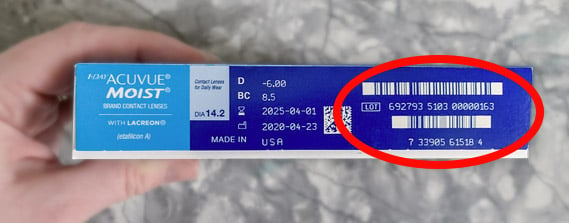Common Eye Problems
Eye disorders and diseases are more common than you might think. Contact lenses can correct some vision problems associated with eye conditions, while others require surgery or various treatment options. Many people suffer from the following eye conditions:
Amblyopia
- What is Amblyopia?: Commonly referred to as lazy eye, amblyopia is a visual development disorder where the brain favors the eye with better vision over the other.
- Causes: Amblyopia is usually inherited. It develops from an abnormal visual experience that changes the nerve pathways between the retina and the eye early on in life. The weaker eye receives fewer visual signals and the eyes aren’t able to work together correctly.
- Symptoms: One eye having clearer vision than the other.
- Treatment: Amblyopia can be treated with prescription glasses, vision therapy of patching the “good” eye to strengthen the other eye, blurring the “good” eye with dilation drops, or surgery.
Astigmatism
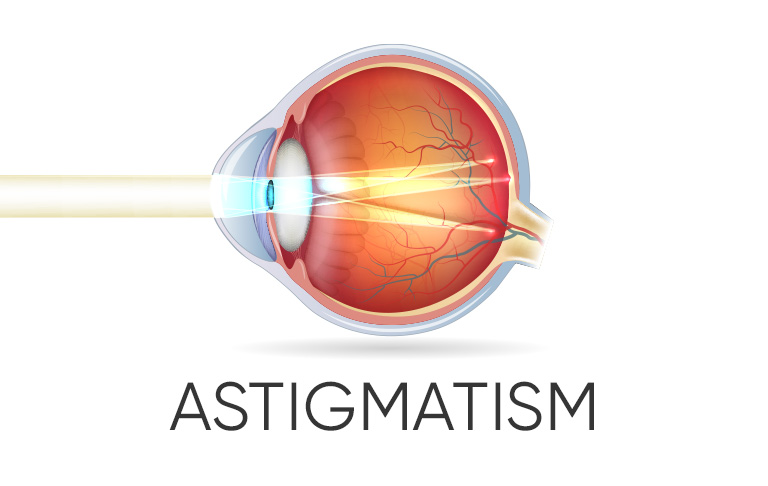
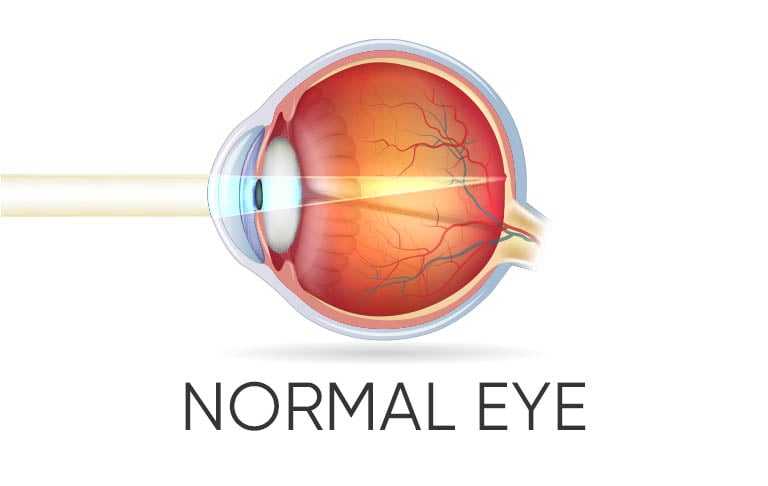
- What is Astigmatism?: People with astigmatism have an irregularly shaped cornea, which causes light to refract or bend incorrectly within the eye.
- Causes: Astigmatism is hereditary, but it can also develop after an eye injury, eye disease, or eye surgery.
- Symptoms: Blurred vision, difficulty seeing in low light, eyestrain.
- Treatment: Toric contact lenses are torus-shaped lenses designed to correct astigmatism.
Cataracts
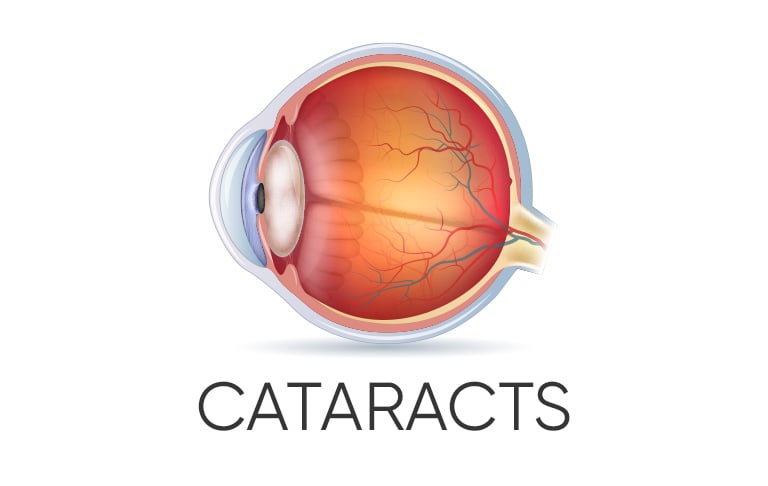
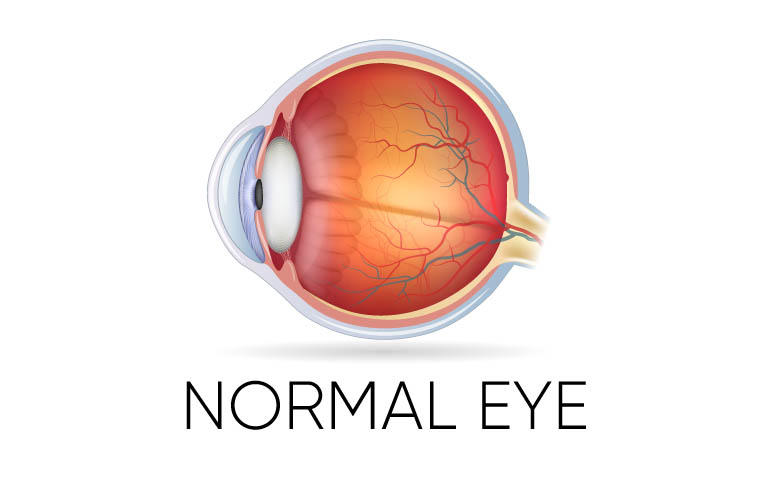
- What are Cataracts?: Cataracts occur when a normally clear eye lens becomes cloudy over time.
- Causes: Most cataracts develop when aging or injury changes the tissue that make up your eye’s lens. It can slowly develop over the course of years. Cataracts can be caused by other eye conditions, eye surgery, or medical conditions.
- Symptoms: This results in blurry vision, difficulty seeing especially at night, and potential vision loss.
- Treatment: The cloudy lens can be replaced with a clear, artificial lens.
Glaucoma
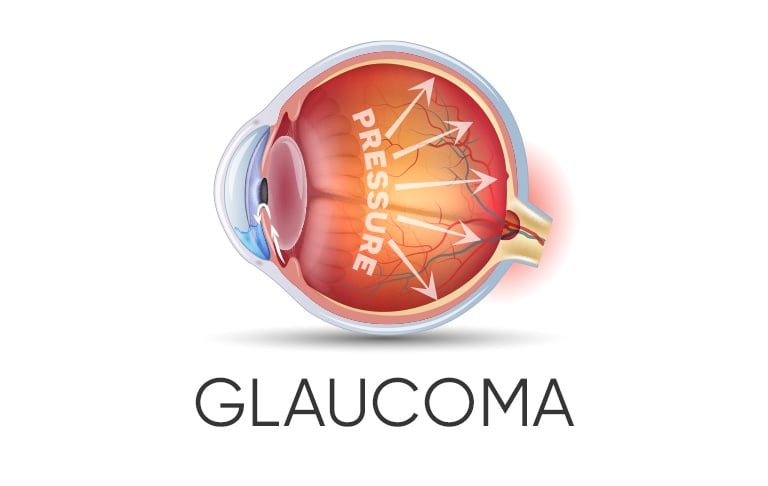

- What is Glaucoma?: Glaucoma consists of a group of disorders that lead to progressive damage to the optic nerve.
- Causes: It is caused by high pressure to the eye and runs in families, but usually doesn’t occur until later in life.
- Symptoms: It can result in vision loss from the loss of nerve tissue.
- Treatment: Glaucoma can be treated with medications, surgery, or laser treatments to lower the eye’s pressure.
Hyperopia
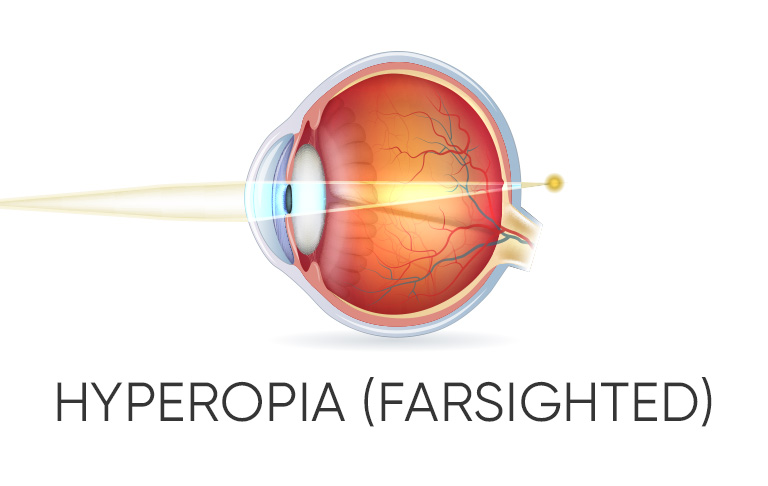

- What is Hyperopia?: Also known as farsightedness, hyperopia occurs when the eye is shorter than normal or has a cornea that is too flat.
- Causes: Hyperopia is usually inherited.
- Symptoms: You can see far away objects clearly, but close objects are blurry.
- Treatment: Hyperopia can typically be easily treated with contact lenses.
Keratoconus
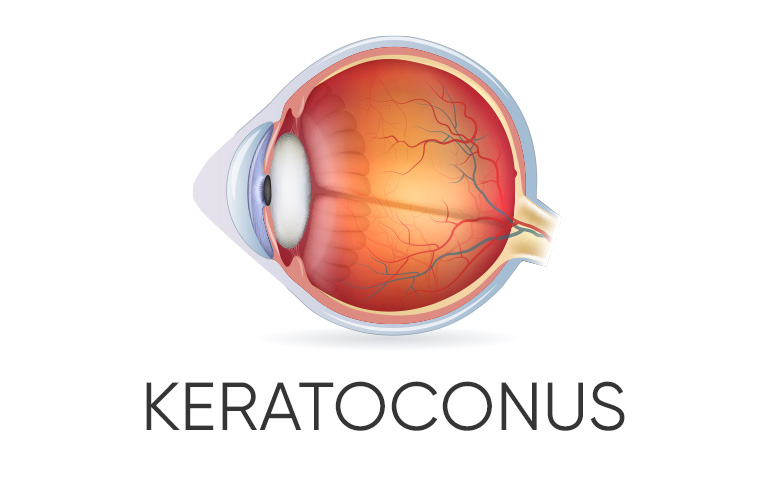

- What is Keratoconus?: This eye disorder results in the cornea becoming cone-shaped.
- Causes: Doctors don’t know for certain what causes keratoconus. Some cases appear to be genetically passed down while others are associated with connective tissue disorders.
- Symptoms: Blurred or distorted vision, redness, and sensitivity to light. Keratoconus can result in loss of vision or the need for a cornea transplant if not treated in time.
- Treatment: Rigid gas permeable (RGP) contacts or custom soft contact lenses may be used to strengthen the cornea and improve blurred vision.
Macular Degeneration
- What is Macular Degeneration?: This is an eye disease that affects a portion of the retina called the macula, the light-sensitive center of the back of the eye.
- Causes: This is typically age-related and can be passed down from genetics.
- Symptoms: Blurred vision, dark areas in the center of your vision, worsening of color perception, and loss of vision. It is the leading cause of blindness in the U.S.
- Treatment: Although there’s no treatment, the progression of macular degeneration can be slowed with vitamin supplements, eating healthy, and not smoking.
Myopia
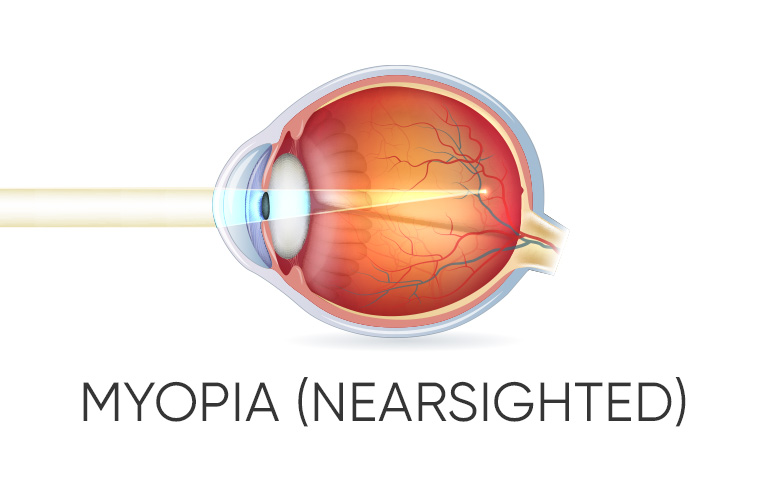

- What is Myopia?: Also known as nearsightedness, myopia occurs when the shape of your eye causes light rays to bend incorrectly, focusing images in front of your retina instead of on your retina.
- Causes: Myopia tends to run in families.
- Symptoms: You can see close objects clearly, but farther away objects are blurry.
- Treatment: Myopia can typically be easily treated with contact lenses.
Presbyopia
- What is Presbyopia?: Those with presbyopia experience close objects gradually becoming blurred.
- Causes: Presbyopia is caused by natural aging—as you age, the lens inside of the eye can become less elastic making it harder to focus on nearby objects.
- Symptoms: Blurred vision, trouble reading.
- Treatment: Bifocal or multifocal contact lenses can be used to correct presbyopia.
Strabismus
- What is Strabismus?: Strabismus occurs when a person’s eyes are misaligned or pointing in different directions.
- Types of Strabismus:
- Esotropia: One eye is misaligned inward, referred to as “crossed eyes”.
- Exotropia: One eye is misaligned outward, referred to as “wall-eyed”.
- Hypertropia: One eye is misaligned upward.
- Hypotropia: One eye is misaligned downward.
- Causes: Strabismus is caused by a neurological or anatomical problem that interferes with the function of the extraocular muscles (the external muscles that control the eye position and movement). It can be genetic, so those with strabismus have a higher chance of their children developing it too.
- Symptoms: This affects vision since both eyes are not focused on one spot at the same time. Those with strabismus may find themselves subconsciously tilting their head a certain way to see, experiencing eye strain, and suffering from headaches. Amblyopia can be a complication of Strabismus if left untreated.
- Treatment: Strabismus can be corrected with eyeglasses, prisms, vision therapy, or eye surgery.
Talk to your eye doctor if you experience any changes in your vision. It is important to get annual eye exams since some changes may be too subtle to notice and the earlier eye conditions are treated, the better.

